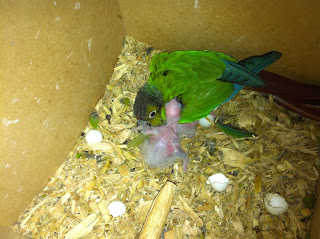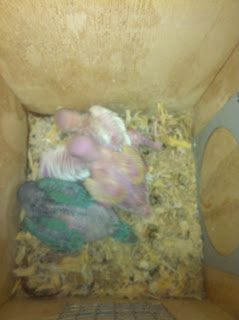Based on some advice from a breeder that I purchased my last Scarlet Chested Parrot from I'm going to make some changes to breeding or nesting box.
 1. Size
1. Size - I'm going to use a larger box. I have noticed that both the Scarlet Chested and Bourke parrots prefer the larger parrot box that I have been putting in with the smaller budgie sized boxes, often getting two females nesting in the same box. I have purchased two boxes between the budgie and the bigger sized box.
I have been advised that the male and female Scarlet Chested Parrot can quarrel inside the box causing concussion of the female if the box if it is two small. I have witnessed spots of blood on the inside of boxes in the past and could also explain the poor feather condition of male females during breeding season.
2. Material - To date I have been using non toxic saw dust. I have decided on advice to go for parrot nesting material that is a blackish colour and largely made of peat, I believe.
I this case I have been advised that saw dust can cause a lung condition in smaller parrots and finches. I have yet to find any contributing evidence though.
The range of materials able to be used can vary greatly from saw dust, straw, wood chips, twigs, dried grass, shredded new paper to hessian.



















































